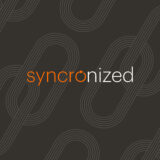Revenue is vanity, profit is sanity, cash is king.
Those are the words of financial consultant Alan Miltz.
What Alan means is that you can have all the revenue in the world but if you’re not properly managing your MSP cash flow — timing the money flowing in and out of your business — your company will struggle.
Especially in a recession, good cash flow management can make the difference between thriving or shutting your doors. With that in mind, here are 6 ways you can improve cash flow management in your MSP right now.
- Review your MSP cash flow statement monthly
- Forecast your MSP cash flow 6 months at a time
- Optimize your pricing
- Change your billing practices
- Review your expenses
- Automate savings
1/ Review your MSP cash flow statement monthly
First, let’s define our terms.
- Revenue is money generated from your business operations. It’s also called sales or income.
- Profit is what’s left of your revenue after you pay all the expenses associated with running your business.
- Cash flow is the net amount of cash being transferred in and out of the business at any point in time. Cash flow can be positive or negative, depending on whether you have more money coming or going out.
While they are often confused, profit and cash flow are different. As accountant Rayanne Buchianico puts it, “Just because you have money in the bank, it doesn’t mean you made a profit. And just because your bank account is empty or close to empty, it doesn’t mean that the business has a loss.”
Then there are three types of cash.
- Operating cash is money received or spent through normal business operations. Your revenue and expenses are operating cash.
- Investing cash is money spent or generated from things like equipment and property purchases, or stock market investments.
- Financing cash is cash that flows between the business and its investors, owners, and creditors. Loans and your business equity are types of financing cash.
A statement of cash flows will summarize the three different types of cash, as well as an opening and closing cash balance. Here’s an example of how an MSP cash flow statement might look.

Reading this, you can see that operating cash was higher than the net income for the month. It looks like the business collected some old receivables and held onto some payables.
A big red flag for a creditor or investor sits in the financing activities section. The company borrowed $25,000 during the period while the shareholder took almost that same amount out. This could indicate the owner is borrowing money in the company name to use for personal purposes.
Rayanne recommends running a cash flow statement every month, along with your balance sheet, and profit and loss (P&L) statement, and reviewing each one carefully.
If your business is healthy and growing, your operating cash flow should be positive. Your investing cash flow may be negative as you make investments in the business that haven’t yet generated a return.
Overall, the statement will help you spot any cash flow red flags, such as money tied up in inventory or overdue accounts receivable.
2/ Forecast your MSP cash flow 6 months at a time
One great thing about the MSP billing model with its monthly recurring revenue, is that it’s relatively easy to forecast cash flow. You know how much revenue to expect and when, and expenses are typically the same, all billed on a monthly basis.
Developing an MSP cash flow forecast then becomes a simple task of logging your expected revenue and expenses in an Excel spreadsheet. The cash flow spreadsheet integrates with your accounting package so you can import your sales and expense data.
Forecast your cash flow on a weekly cadence, six months at a time, Rayanne advises. This will help you spot red flags well in advance. If you know three or four months out that you’ll have a cash flow crunch, it’s much easier to put mitigation strategies in place than if you’re scrambling at the last minute.

3/ Optimize your pricing
Are you undercharging? Probably. At least for some clients.
“It’s typically the legacy clients that are paying us the least,” says MSP consultant Erick Simpson. “Our operational maturity probably wasn’t where it needed to be when we started our businesses, so we haven’t been truing them up regularly.”
Erick recommends firing your worst clients at least once a year. At the same time as you’re shedding unprofitable clients, he advises MSPs to review prices for clients you’re keeping and raise their rates where necessary. “We’re maintaining that profit margin target with those existing clients so we don’t get stuck in that legacy pricing client situation.”
Inflation can also eat away at profit margins, so make sure you’re reviewing client pricing with that lens as well and roll out price increases as needed.
As we’ve discussed, profit and cash flow aren’t the same but if your revenue isn’t enough to cover expenses (thus wiping out your profit), your cash flow will have a tough time keeping up.
So optimizing prices is one way to make sure you’ve got enough cash coming in. Next we look at improving when that cash comes in.
4/ Change your billing practices
“You are not the bank of whatever your business name is,” says Rayanne. Don’t let clients use you as a way to get informal credit.
For example, if you purchase hardware on your credit card, then give the client 30 days to pay their hardware invoice, it’s your credit line that’s giving the client a free 30 days to pay.
“That will add up,” says Rayanne. “The more customers you get, it will eat at your cash.”
There are two changes you can make to your billing practices that will significantly improve your MSP cash flow.
- Bill everything in advance, from hardware to monthly services.
- Put all your clients on direct debit so there’s no waiting to get your money (and no time wasted chasing clients for payment).
After identifying a cash flow problem caused by late client payments, MSP Jamie Warner switched all of his clients to direct debit. “It took away all the stress. I really cannot say that enough,” he said.
5/ Review your expenses
Review your expenses—your cash outflows—on a regular basis.
Make sure you’re being billed the correct amount. Are there tools you’re no longer using or could do without? Tools you can consolidate? The more you can trim your expenses, the easier it will be to achieve positive cash flow.
An expense review is also a good time to look at your markup pricing on pass-through expenses. Was there an increase somewhere that you need to reflect in pricing changes to clients?
6/ Automate savings
Set up a savings account with your bank and automate weekly transfers of cash into the savings account. “Get it out of your operating account and put it in a safe place so that you can start stockpiling cash in the event that you need it,” recommends Rayanne.
This rainy day fund can come in handy during a cash flow pinch, or to fuel growth down the line.
—
Get more tips on managing your MSP cash flow in any economy in the on-demand webinar with Rayanne Buchianico and Jamie Warner, The Essentials of Cash Flow Management for MSPs. You’ll get a free copy of Rayanne’s 6-month cash flow forecast spreadsheet and a guide on how to use it.
Share














